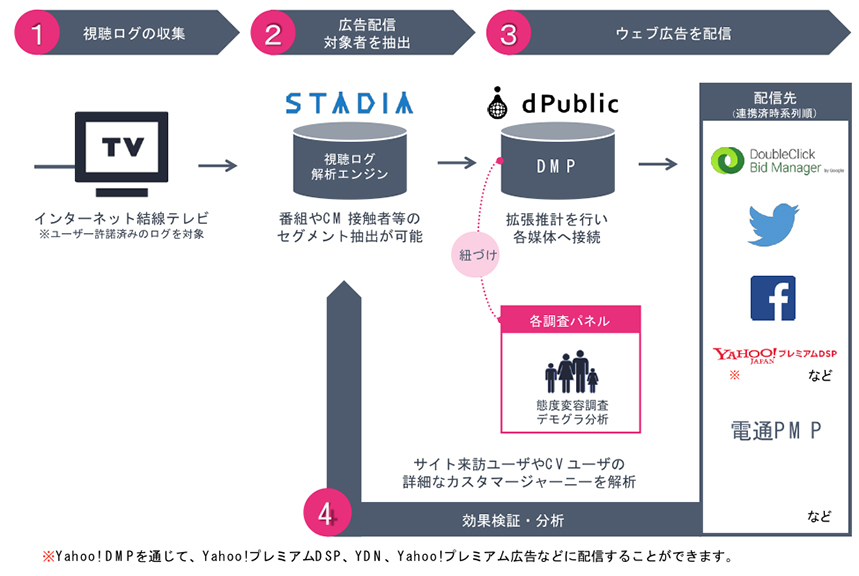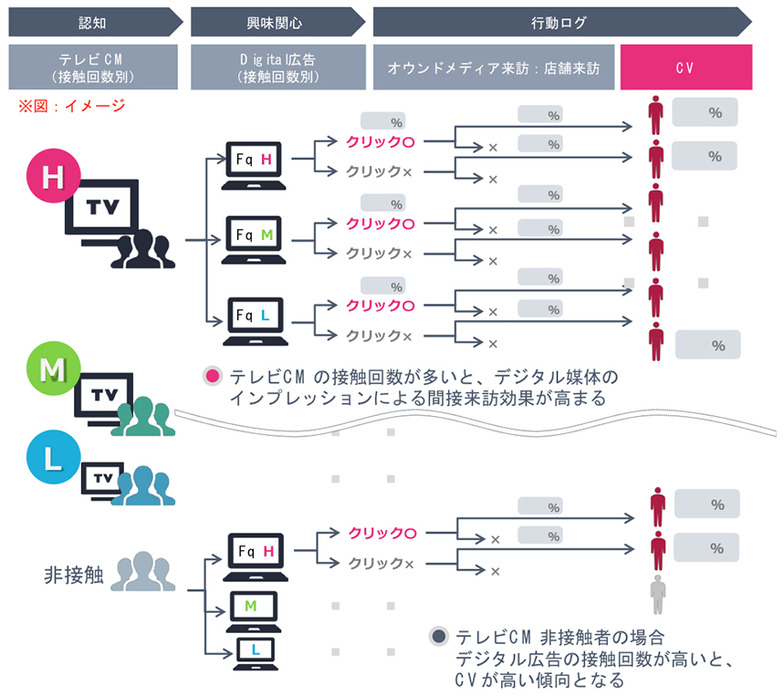Dentsu Inc. to Launch Full Version of Integrated Marketing Platform "STADIA" in April ― Strengthening Integration Between Actual TV Viewing Log Data and Digital Ad Delivery ―
The text of the Dentsu Inc. news release distributed on March 31 is as follows.
March 31, 2017
Dentsu Inc. to Launch Full Version of Integrated Marketing Platform "STADIA" in April
―Enhancing Integration Between Actual TV Viewing Log Data and Digital Ad Delivery―
Dentsu Inc. (Headquarters: Minato-ku, Tokyo; President: Toshihiro Yamamoto) has expanded the functionality of "STADIA" (see Figure 1), its integrated marketing platform for digital ad delivery and effectiveness verification based on actual TV viewing logs. This expansion enables the full-scale implementation of data-driven marketing that spans offline and online channels.
Developed by Dentsu in March 2016, "STADIA (beta)" is an integrated marketing platform that enables digital ad delivery to individual viewers based on actual TV viewing log data. It also serves as a tool for verifying and improving the effectiveness of actions prompted by exposure to TV commercials and digital ads—such as website traffic or membership registrations—as well as attitude changes like awareness building and interest generation.
Over the past year, we have conducted integrated offline-online planning and effectiveness verification based on real data for various advertisers through "STADIA (beta version)." We have now enhanced the platform with the following three features and will release the official version starting in April.
Expanded Ad Delivery Destinations
In addition to existing DSPs (Demand-Side Platforms) like Google™, we have expanded ad delivery destinations through partnerships with digital platform providers including Facebook※1, Twitter※2, and Yahoo! Japan※3 (listed in alphabetical order).
Expanded Data Scale and Enhanced Integration with Company Research Panels
As of March 2017, we have expanded our web audience data linked to actual viewing log data from approximately 500,000 TV sets with ad delivery permissions to about 10 million IDs. Furthermore, by linking with each company's survey panels, we can now verify the effectiveness of detailed integrated attribution connecting offline and online (see Figure 2).
Developing an Engine to Estimate TV Viewing Behavior Using AI (Artificial Intelligence)
By applying AI technologies such as deep learning to actual TV viewing logs, we can achieve highly accurate estimations for the "light viewer segment" (those who watch little TV) and infer demographic information like gender and age group. This enables digital ad delivery based on these insights.
Moving forward, we will continue to enhance STADIA's functionality and integrate it with our public DMP (dPublic) ※4. By connecting mass media data originating from television with digital audience data and further linking it to purchase data, we will map highly accurate customer journeys (customer behavior paths). This will enable the delivery of optimal advertising communication tailored to each individual.
*1: Online connection with Facebook and integration with Axiom (whose business includes Data Connect)
※2 : Delivery integration through Twitter's Tailored Audience Partnership certification
※3: Integration with Yahoo! DMP
※4: Utilizing Dentsu Inc.'s approximately 400 million audience data points and integrated marketing platform, we combine media data and panel survey data with client-owned data to enable more precise planning.
and panel survey data with client-owned data to enable more precise planning and targeting.
.
For details, visit http://www.dentsu.co.jp/news/release/2016/0801-008994.html
STADIA Concept Diagram

Image of integrated online-offline attribution analysis


End
Dentsu Inc. News Release
http://www.dentsu.co.jp/news/release/2017/0331-009210.html
Was this article helpful?